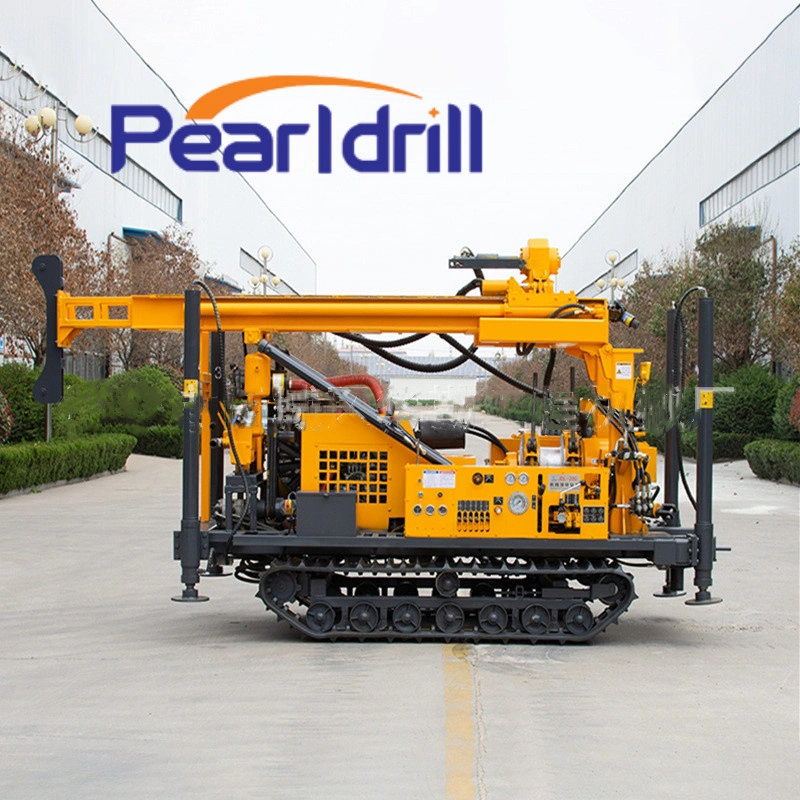Essential safety tips for water well drilling rig operation in the rainy season and hot weather
Drilling for groundwater is super important, but operating water well drilling water well Drilling Rigs—even high-performance ones like a Pearldrill water well drilling rig—gets really tough in China's long, rainy southern season and the crazy heat up north. To keep the project safe, the equipment running, and the team healthy, we need some serious strategies.

Rainy Season Ops: Fighting "Floods" and "Mud"
The biggest enemies during the rain are slippery sites and electrical hazards.
1. Site & Equipment Safety
Lightning & Shock:
Check the Cables! Especially for Pearldrill water well drilling rigs, you must check all cables and circuits for any damage or exposed wires. Insulation is key!
Stop Work in Thunderstorms! Turn off the power and move the rig to a high, dry spot with a good lightning rod nearby.
Wear the Right Gear! Operators must wear insulated rain gear and safety protection.
Foundation & Anti-Slip:
Pick a Good Spot: Choose a high area with good drainage before you start. Dig drainage ditches around the rig to keep water out of the foundation and mud pits.
Stay Firm! Make sure your Pearldrill rig's stabilizers/legs are super solid. On soft, muddy ground, use mats or timber to spread the load and stop the rig from tipping or sinking.
Lubrication & Maintenance:
Rain causes rust and can make the oil inside your machinery go bad (emulsify). Check and change the lubricants quickly.
After the rain stops, give all exposed parts of the Pearldrill rig a thorough clean and dry.
2. Crew Safety
Visibility: Rain makes it hard to see, so manage the site well and put up bright warning signs to prevent people from slipping or falling.
Be Prepared: The crew needs to know the emergency plan for the rainy season, especially how to handle electric shock first aid and how to pump out water from the equipment.

High-Temp Ops: Battling "Heat" and "Tiredness"
When it's scorching hot, the equipment overheats fast, and the crew risks heatstroke and exhaustion.
1. Rig Cooling & Maintenance
Boost Cooling: Key components like the engine and hydraulic system on the rig can easily fail in high heat. You must constantly check the water level, water temp, and oil temp to make sure the cooling system is working perfectly.
Clean the Radiator! Get rid of all the dust and junk to ensure good airflow. Spraying the equipment with water can help cool it down, if needed.
Check the Fluids: Heat lowers the viscosity (thickness) of hydraulic and lubricating oils, which hurts performance. Use high-quality, high-temp oils and closely watch the oil level and quality.
Avoid Peak Heat: Try to avoid drilling between 12 PM and 3 PM. Follow a "sandwich" principle: work early in the morning and late in the evening.
2. Crew Health & Support
Stay Cool! Provide the crew with plenty of drinking water, salt water, and heatstroke prevention meds.
Rest is Key! Set reasonable work hours to ensure the crew gets enough rest and doesn't work while exhausted.
Wear the Right Stuff: Operators should wear light, breathable, sweat-wicking safety clothes, helmets, and sun protection to avoid direct sun exposure.
Monitor Health: Keep a close eye on your team. If anyone shows signs of heatstroke, give them immediate first aid and get them to a hospital.
 The Bottom Line:
The Bottom Line:
Whether you're dealing with the wet and lightning of the rainy season or the scorching heat and overheating of the summer, "Prevention First, Safety Above All" is the golden rule for water well drilling. For precise equipment like the Pearldrill water well drilling rig, detailed management and maintenance in bad weather are crucial. By having solid emergency plans, boosting safety training for your crew, and strictly following the maintenance schedule, you can ensure your Pearldrill water well drilling rig operates safely, continuously, and efficiently through any weather!
Contact us
I Hope This Article Was Helpful. If You Have Any Other Questions, Please Feel Free To Contact Us.


